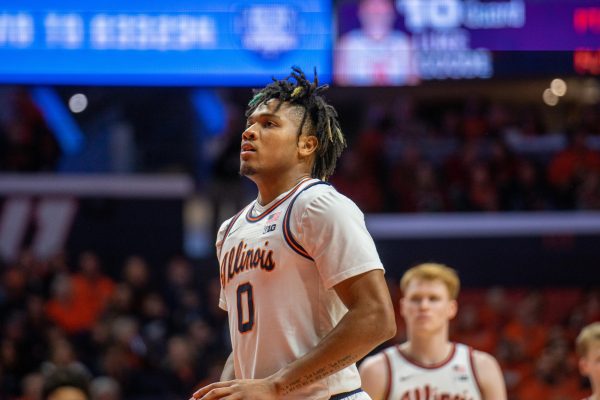MOOC expansion signals beneficial integration between traditional and online course structures
February 27, 2014
Online courses are rapidly emerging within educational institutions across the country — and you don’t have to look much further than our University to see why.
In fact, the number of classes taught completely online jumped from 1.4 percent to 5.3 percent over the last few years, according to Faye Lesht, head of the division of academic outreach at the Office of Online and Continuing Education. And part of that is thanks to the expansion of Massive Open Online Courses, or MOOCs.
As tuition costs rise, increasing numbers of students are looking for more affordable, less traditional means of obtaining the knowledge and skill sets offered by the pricey four-year degree. Professors are looking for ways to maximize and integrate technology into their class structure, and administrators are seeking to reach out to as many students as possible — on and off campus.
Essentially, the University wants to globalize its education by offering its online courses around the world for free, although they won’t count for credits toward a degree, yet. And while it may seem counterproductive to take a class without it counting toward anything, the integration of online education and materials into the traditional class structure may very well be the new frontier of higher education.
Consider Compass, a website designed by CITES, which allows students to utilize an online platform to access grades, assignments exams readings and beyond. It’s now used by nearly every professor in every class at the University, emphasizing the significance of integrating multimedia aspects used online and in the classroom.
Get The Daily Illini in your inbox!
Students want to take classes that expand their knowledge in a specific field so they can develop a particular skill set, but they don’t want to take extraneous and irrelevant classes to get there. They want a University of Illinois-branded education, but without the University of Illinois price tag. And they want a high-quality education that can be accessible from anywhere, not just from being physically present at their respective university.
But beyond attracting students without the financial means to pursue higher education, the MOOC expansion will strengthen the already salient online education and course infrastructure that exists for current University students. However, rather than having online courses replace or overshadow the traditional in-class, lecture-discussion course structure, we hope that MOOCs will simply supplement and enhance the classes we already have.
Students want, as mentioned by assistant head of programs and services at the Office of Online and Continuing Education Adam Fein, to take aspects of MOOCs and carry them over to traditional courses, and vice versa. Traditional classes can borrow from MOOCs’ emphasis on multimedia material, while MOOCs can borrow from traditional classes’ emphasis on face-to-face interaction and discussion.
Online education and traditional classes can coexist at our University — they can feed off one another, forming a strong integration between the traditional and online course.
But more importantly, MOOCs can give students, both at this University and across the world, the chance for a new type of education. One that will bring the University of Illinois stamp beyond Champaign-Urbana — along with the accessibility and affordability today’s students want and deserve.






